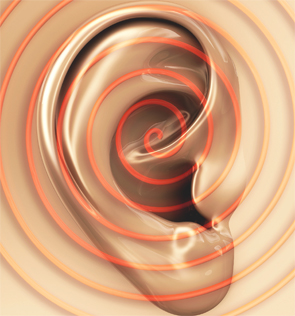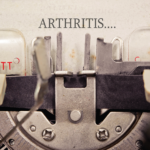
SSNHL was first described in 1979 in a series of 18 patients from Iowa whose acute hearing loss was not explained by the usual causes.
Image Credit: xrender/shutterstock.com
I sometimes find myself mired in sticky clinical circumstances. I am facing a distraught patient who is seeking my opinion about a condition that, according to some, may not truly belong in the rheumatologist’s bailiwick. Case example: hearing loss.
The Steroid Test
Sudden sensorineural hearing loss (SSNHL) and its relative, autoimmune inner ear disease (AIED), can both be devastating disorders. Literally materializing out of thin air, they inflict havoc on victims young or old, male or female. Timely diagnosis and prompt initiation of corticosteroid therapy may preserve some or all hearing, albeit for a brief period, in approximately 60% of patients.1 Unfortunately, alternate medical therapies for those who fail to respond to corticosteroids have proved largely ineffective. Patients’ hearing loss is impervious to our standard armamentarium: Methotrexate, azathioprine, mycophenolate, cyclophosphamide and TNF inhibitor drugs offer little benefit. Hearing aids or cochlear implants become the only viable options.
Unlike most other autoimmune disorders, the response to steroids or the lack thereof determines a patient’s fate. One simple observation determines an illness’ trajectory.
It’s quite unnerving to suddenly lose hearing. When I experienced my own bout of SSNHL many years ago, high-dose steroids succeeded in bringing my hearing back, although for a few harrowing weeks, an eerie wall of silence replaced much of the din surrounding me. Often, it seemed the loudest sound I heard was a monotone of continuous tinnitus that played unendingly in my damaged ear like a scratched record album. At least the neighboring delicate labyrinth organs of my inner ear were spared, and I suffered no accompanying vestibular symptoms. Weeks after filling my steroid prescription, the sound of Brahm’s lullaby playing on my child’s wind-up toy no longer sounded off key. Consider me lucky.
SSNHL was first described in 1979 in a series of 18 patients from Iowa whose acute hearing loss was not explained by the usual causes, such as exposure to ototoxic drugs, loud noises or structural ear disease.2 Based on the author’s observation that a single patient had vasculitis identified on a biopsy and that all patients improved following treatment with either corticosteroids or cyclophosphamide, he concluded that this form of SSNHL was autoimmune in nature.
At first glance, the world of immune-otology bears little resemblance to rheumatology. However, not infrequently, our paths cross; in cases of vasculitis involving the ears, nose and throat in patients with granulomatous polyangiitis (GPA) and its variants; in Cogan’s syndrome with its characteristic ear and eye findings; and in some patients with giant cell arteritis who develop hearing loss issues. In their own ways, relapsing polychondritis and Paget’s disease can inflict substantial damage to the exquisite cartilaginous and bony structures within the middle and inner ear that transform sound waves into comprehensible words and musical tones. Some hearing loss is iatrogenic. Recall the days of salicylism, when our high-dose-aspirin-based therapies often inflicted a transient hearing loss and triggered tinnitus?
Immune Privilege of the Eye: See No Evil
The outsized role played by sound and sight, smell, taste and touch in human’s evolutionary ascent is extraordinary. As the senses steadily grew in sophistication, the massive data processing and analytic capabilities required for the interpretation of continuous sensory input created enormous stresses on brain development, which resulted in the remarkable growth and expansion of our cognitive capabilities. One could surmise that immune surveillance systems played critical roles in safely harboring and protecting the senses from an inadvertent attack by rogue lymphocytes by creating safe refuges from immune-mediated inflammation. In fact, due to the sensitive nature of these tissues, the brain, the pregnant uterus, the testes and the eye are generally “no-fly zones” for inflammatory cells.
Perhaps the earliest description of immune privilege, a term coined by the Nobel laureate, Sir Peter Medawar in the 1950s, was actually made 75 years earlier by a Dutch ophthalmologist, J.C. van Dooremaal, who noted prolonged survival of mouse skin grafts placed in the anterior chamber of the dog eye.3 This observation was carried further by Medawar and his colleagues, who showed that the aqueous humor, which fills the anterior chamber, contained a wide array of anti-inflammatory and immunosuppressive molecules that act on both the innate and adaptive responses.3
It took a stroke of serendipity to lead to these groundbreaking discoveries. Early in World War II, a plane crashed a few hundred yards from Medawar’s home in Oxford, England, and the pilot, who sustained third-degree burns over most of his body, was taken to the Radcliffe Infirmary, where he was visiting that afternoon. The obvious solution was to graft skin, and Medawar tried several times to cover the wounded area with a preparation of the patient’s own skin, but without success. He tried freezing the patient’s available tissue and slicing it into thin segments and also attempted to strip the epidermal cells using trypsin, all without benefit. As a result of this disappointing experience, he decided to study the nature of the homograft reaction itself. He observed that in burn patients, homografts were invaded by lymphocytes, but autografts were not.
Using the anterior chamber of the eye as a site of immune privilege for his tissue grafting experiments, Medawar was among the first immunologists to dissect the pathways critical for successful organ transplantation. His prescient observations that immunological tolerance to transplants could be acquired in adult life provided the therapeutic underpinnings for countering allograft rejection. As a frequent visitor to my hospital, presumably he shared these insights with the late surgeon Dr. Joseph Murray, who performed the world’s first successful renal transplant.4
But nature is never perfect. Occasionally the eye’s privileged immune status is pierced, and we bear witness to the clinical correlates of these errors, including those cases of iritis and uveitis that have a predilection for developing in patients who carry the HLA-B27 allele or in young girls who are ANA antibody positive or when normally bland rheumatoid nodules sprout out of an eyeball, eviscerating the surrounding sclera. Thankfully, nowadays, we are spared this ghoulish appearance.
Smell with Inspiration
Smell is the most underappreciated sense, perhaps because it reminds us of our animalistic links to our prehistoric past. Sigmund Freud argued that humans lost their sense of smell when they first stood upright.5 Au contraire, Herr Freud! The olfactory receptor gene family remains the largest in the mammalian genome, comprising 1% of all genes. Our sense of smell dates back 200 million years to the age of reptiles, when a keen sense of smell was a requisite for survival. From an evolutionary perspective, the olfactory bulb is the only part of the central nervous system that defies the brain-development principle of “late equals large.”6 The entire olfactory limbic system, including the bulb, the hippocampus and amygdala, remains disproportionately large in homo sapiens, providing us with a tactical edge when we are predators while reducing our risk when we are seen as prey.
Each species carries an olfactory repertoire unique to the genetic makeup of that species. The human repertoire is quite diverse, capable of detecting millions of airborne odorants in the tiniest concentrations. We exhibit tremendous variation in our genes that control the receptors in our olfactory epithelium, and this may relate to differences that relate to cross-cultural perception of and preference for certain smells. With age, humans experience differential olfactory dysfunction, with some odors, such as citrus or banana remaining strong and others, including many unpleasant ones, becoming increasingly faint.
What about the role of olfaction in autoimmune diseases? In a murine model, lupus-prone males spent less time exploring unfamiliar conspecifics and they demonstrated age-dependent performance deficits when exposed to low concentrations of attractant and repellant odors.7 The emergence of olfactory changes was associated with a skewed distribution of highly specific cells in the periventricular area of their brains, due to disrupted migration of neuronal precursor cells toward the olfactory bulb. Might olfactory memory deficit contribute to altered performance in other behavioral tasks? If so, this might reflect a prodrome of brain damage induced by this model of a chronic autoimmune disease.
Moving from the cage to the bedside, one can observe olfactory decline in many patients with systemic autoimmune diseases. Example: A recent study identified a reduction in olfaction in patients with GPA, but curiously, this observation was also noted in patients with inflammatory myopathies and rheumatoid arthritis.8,9 Surprisingly, the reduction was not related to the severity of sinus or nasal disease in GPA, rather the loss correlated to the degree of systemic inflammation.
More critically, reduced olfaction may serve as a marker for a host of neurodegenerative conditions, particularly the earlier detection of Alzheimer’s and Parkinson’s diseases, a finding that is used in the neurological bedside exam.5 Without a doubt, the most unexpected role for olfactory receptors has been the observation that the sperm of several mammalian species express olfactory receptors that are involved in sperm chemotaxis in humans.10 Go figure!
A Salty Taste
Although taste receptors were first identified on the tongue, where they initiate a signaling pathway that communicates information to the brain about the nutrient content or potential toxicity of ingested foods, they are also expressed in myriad tissues, from the airways and the gastrointestinal epithelia to the pancreas and the brain. The functions of many of these extra-oral taste receptors remain unknown, but emerging evidence suggests that bitter and sweet taste receptors in the airways serve as important sentinels of innate immunity.11
Not unlike other situations involving immunity, a whole series of intricate connections link taste receptors to immune modulation. In one mouse model, activated taste buds responsible for the perception of sweetness produce the pro-inflammatory tumor necrosis factor (TNF), whereas those that identify bitter tastes produce the anti-inflammatory cytokine, interleukin 10.12 Could this finding help explain the placebo effect of bitter-tasting pills?
Salt is probably the greatest flavoring additive ever discovered. It is used in every cuisine. Salt can drive behavior, reminding us to drink more liquids or encouraging us to gorge ourselves with a particularly salty snack. Think of salted nuts—or in my case, barbeque-flavored potato chips. Although there is a need to reduce salt consumption because of its potentially deleterious effects on blood pressure, it now appears that NaCl may provide a hypothetical benefit to our host defenses.
How? Type 17 helper T (Th17) lymphocytes produce the prototype cytokine interleukin 17, as well as interleukin 21 and interleukin 22, cytokines that are pivotal in the defense against bacteria and fungi. Owing to their strong inflammatory properties, however, Th17 lymphocytes also confer susceptibility to autoimmune diseases.
Two recent studies identified salt in the induction of exaggerated Th17 responses. Modest increases in the concentration of sodium chloride markedly enhanced Th17 responses in vitro, as did a high-salt diet in vivo.13 The molecular mechanisms underlying the sensing of sodium ions and the initial activation of Th17 cells have been largely elucidated: Hypertonic salt directly activates the kinase SGK1, which stabilizes interleukin 23R and, thus, reinforces the Th17 phenotype. It also activates other molecules that induce the expression of SGK1. The Th17-modulating effects of salt were accompanied by an increased severity of experimental autoimmune encephalomyelitis in mice, as compared with the level of severity observed in the conditions with normal salt.13
Whether this finding can be extended to human autoimmune diseases remains to be seen, but in the meantime, would you mind passing me the potato chips?
 Simon M. Helfgott, MD, is associate professor of medicine in the Division of Rheumatology, Immunology and Allergy at Harvard Medical School in Boston.
Simon M. Helfgott, MD, is associate professor of medicine in the Division of Rheumatology, Immunology and Allergy at Harvard Medical School in Boston.
References
- Vambutas A, Lesser M, Mullooly V, et al. Early efficacy trial of anakinra in corticosteroid resistant autoimmune inner ear disease. J Clin Invest. 2014 Sep;124(9):4115–4122.
- McCabe BF. Autoimmune sensorineural hearing loss. Ann Otol Rhinol Laryngol. 1979 Sep–Oct;88(5 Pt 1):585–589.
- Niederkorn JY. See no evil, hear no evil, do no evil: The lessons of immune privilege. Nat Immunol. 2006 Apr;7(4):354–359.
- Simpson E. Medawar’s legacy to cellular immunology and clinical transplantation: A commentary on Billingham, Brent and Medawar (1956) ‘Quantitative studies on tissue transplantation immunity. III. Actively acquired tolerance.’ Philos Trans R Soc Lond B Biol Sci. 2015 Apr 19;370(1666). pii: 20140382.
- Hoover KC. Smell with inspiration: The evolutionary significance of olfaction. Am J Phys Anthropol. 2010;143 Suppl 51:63–74.
- Jacobs LF. From chemotaxis to the cognitive map: The function of olfaction. Proc Natl Acad Sci USA. 2012 Jun 26;109 Suppl 1:10693–10700.
- Kapadia M, Stanojcic M, Earls AM, et al. Altered olfactory function in the MRL model of CNS lupus. Behav Brain Res. 2012 Oct1;234(2):303–311.
- Proft F, Steinbach S, Dechant C, et al. Gustatory and olfactory function in patients with granulomatosis with polyangiitis (Wegener’s). Scand J Rheumatol. 2014;43(6):512–518.
- Iaccarino L, Shoenfeld N, Rampudda M, et al. The olfactory function is impaired in patients with idiopathic inflammatory myopathies. Immunol Res. 2014 Dec;60(2–3):247–252.
- Spehr M, Gisselmann G, Poplawski A, et al. Identification of a testicular odorant receptor mediating human sperm chemotaxis. Science. 2003 Mar 28;299(5615):2054–2058.
- Lee RJ, Cohen NA. Taste receptors in innate immunity. Cell Mol Life Sci. 2015 Jan; 72(2):217–236.
- Feng P, Chai J, Zhou M, et al. Interleukin-10 is produced by a specific subset of taste receptor cells and critical for maintaining structural integrity of mouse taste buds. J Neurosci. 2014 Feb 12;34(7):2689–2701.
- van der Meer JWM, Netea MG. A salty taste to autoimmunity. N Engl J Med. 2013 Jun 27;368(26):2520–2521.
Correction
It was brought to our attention that some of the statistics in October Rheuminations were wrong. The Doximity study analyzing the rates of medical students pursuing residency training following graduation was incorrect in claiming that Stanford and UCSF scored poorly. In fact, the opposite is true for both schools. Colleagues at UCSF and Stanford confirmed that their students matriculate to residencies at very high rates, as one would have expected. I completed my research several months ago, and I was unaware that these study results had been challenged by the schools and that the original data was retracted. I apologize for the error and the misunderstanding. Read the updated story online at.
